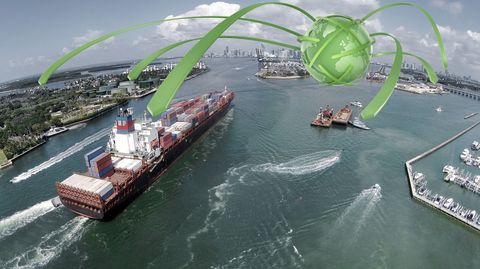As part of its ongoing efforts to improve and overhaul its systems and processes governing global trade, the European Union recently introduced the Registered Exporter (REX) system, a new approach to certifying the origin of goods shipped to the EU from certain countries.
The trans-European system updates the certification process in a number of ways, while also offering easier access to key items of data through digital channels. As with other elements of the Union Customs Code project, this will lead to greater consistency, efficiency and ease of use for international businesses.
However, the REX system remains new and the implementation process is still ongoing, meaning there are many new provisions with which businesses will need to familiarize themselves in order remain compliant.
An overview of the REX system
Introduced at the start of 2017, the REX system is the new system used to manage the certification of origin of goods for countries working within the EU's Generalized System of Preference (GSP) framework, which allows developing nations to pay reduced or zero duties on their exports to the EU.
It is based on a principle of self-certification, meaning economic operators need to register themselves with the relevant authorities and submit their own statements on origin. This replaces the previous system, which was based on certificates of origin issued by governmental authorities, as well as invoice declarations made out under certain conditions by economic operators.
Originally announced in 2010, the introduction of the REX system was deferred to 2017 to give GSP beneficiary countries the necessary time to prepare for its introduction. With the transition process having now commenced, it will also be applied in the context of future bilateral EU trade agreements, with the Comprehensive Economic and Trade Agreement between the EU and Canada being the first.
How the IT system works
Underpinning the REX system will be a new-look IT infrastructure made available by the European Commission that will handle all of the essential functions.
This includes the registration of exporters that fill in the appropriate application forms and return them to competent authorities. Exporters in GSP beneficiary countries will need to register in this way, as will EU operators selling to these countries, or other nations where a free trade deal that uses the REX system is in place. European businesses replacing proofs of origin initially made out in GSP beneficiary countries will also have to register.
Additionally, the IT system is equipped to handle the modification of existing registration data, and to remove operators in cases of fraud, or if the company in question ceases to exist. It is the responsibility of the competent authorities in GSP beneficiary countries to make sure these records are kept up to date and accurate.
Since the REX IT system is entirely web-based, it removes the burden on GSP nations to have to develop solutions themselves; all they will need is access to any web-connected device from which they can log in.
Benefits and stipulations of the system
It is hoped that the REX system will deliver significant benefits in terms of efficiency, usability, standardization and transparency. Since all data will be stored and made searchable online, economic operators using statements on origin will be able to verify the validity of the registrations of any exporters who submit them in a straightforward manner.
However, exporters can also decide whether or not they want their registration data to be published; if not, a certain amount of the information can be made private, with an anonymous subset of the registered data - including the REX number and dates of validity - remaining for verification purposes.
Although economic operators will need to be registered in the REX system to be entitled to make out a statement on origin, the EU notes that unregistered exporters can also do so for consignments valued at less than €6,000.
Key implementation dates
Having been introduced by the majority of GSP beneficiary countries on January 1st 2017, the REX system is well on its way to full implementation, a process that will last until June 30th 2020 at the latest.
However, it should be remembered that certain nations have deferred their introduction of the system to give themselves extra time to prepare. Afghanistan, Armenia, Bolivia, Eritrea, Gambia, Guinea, the Ivory Coast, Malawi, Mozambique, Myanmar, Niger, Rwanda, Sri Lanka, Sudan, Swaziland, Syria and Tanzania will all bring the system in on January 1st 2018, while Bangladesh, Benin, Burkina Faso, Cabo Verde, Cambodia, Haiti, Indonesia, Kyrgyz Republic, Lesotho, Madagascar, Mauritania, Mongolia, Nigeria, Paraguay, Philippines, Samoa, Senegal, Tajikistan, Uganda, Uzbekistan, Vanuatu and Vietnam will do so on January 1st 2019.
As such, any companies doing business with these countries will need to make themselves aware of any relevant local circumstances to avoid regulatory problems. You can find out more about the REX system here.






